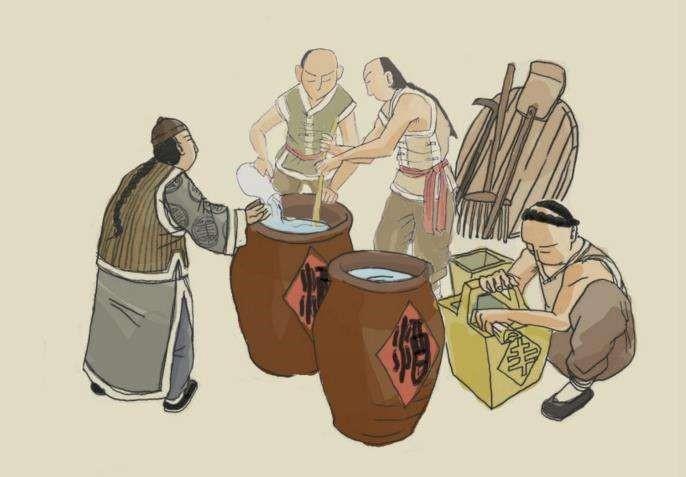China has a long and rich history in alcohol culture, with a wide and profound range of alcoholic products. Drinking alcohol has become a part of the people’s life. So, how is Baijiu (Chinese spirit) made? The principle of brewing is quite simple, which is basically the process of using microorganisms to ferment and produce alcoholic beverages of certain concentration. However, the actual operation is far from this simple. Roughly speaking, the birth of a bottle of Baijiu usually involves several steps: material selection, Qu (a type of fermentation starter) making, fermentation, distillation, aging, blending, and bottling.
I. Material selection
Usually, crops like sorghum, corn, wheat, rice, sticky rice, barley, buckwheat, and highland barley, as well as beans (excluding tuberous and fruit and vegetable categories) are used as the raw material. The requirements are that the grains should be uniform, full, fresh, free of pests and mildew, appropriately dry, free of sediment, free of strange tastes, and free of other impurities. Of course, the raw materials also include some auxiliary materials. In addition, water is one of the important raw materials, hence the saying “water is the blood of liquor,” “good water brews good liquor,” indicating the importance of water source to brewing.
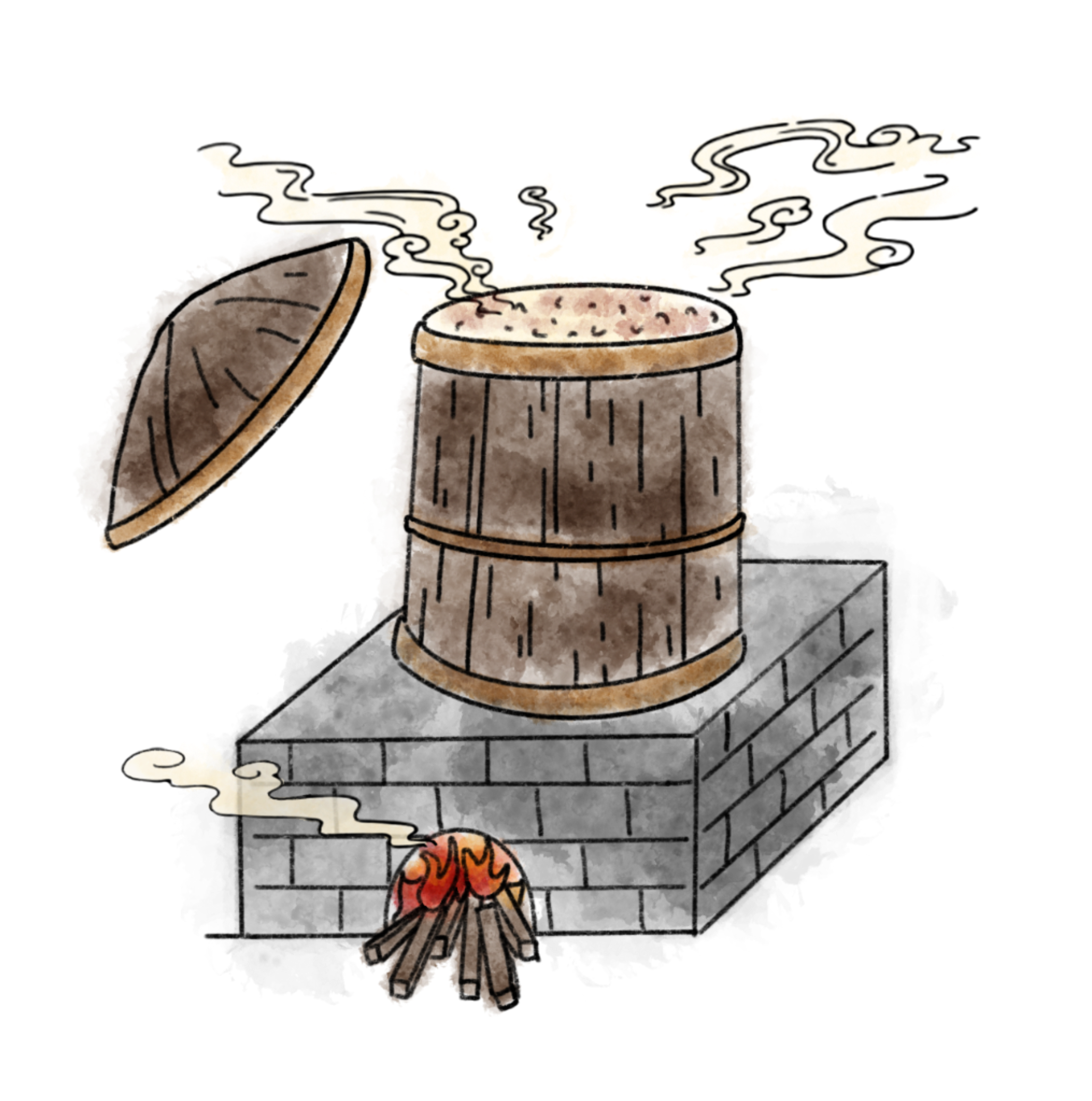
II. Qu making
Making Qu is an important part of the brewing process. Looking at the history of brewing with grain raw materials worldwide, there are two main types. One is to malt the grains, where the enzymes produced by the grains during malting convert the raw material itself into sugar, which is then turned into alcohol by yeast (like beer). The other way is to use moldy grains to make Qu, which contains enzymes that turn the grain material into sugar and ferment it into liquor. The brewing of Baijiu adopts the second method. This process mainly converts starch into glucose (sugar).
III. Fermentation
Baijiu, which is produced using a solid state transition through the processes of ingredient mixing, grain steaming, saccharification, fermentation, and distillation, is referred to as solid-state fermented Baijiu. The fermentation process is essentially the transformation of sugar produced in the previous stage into alcohol.
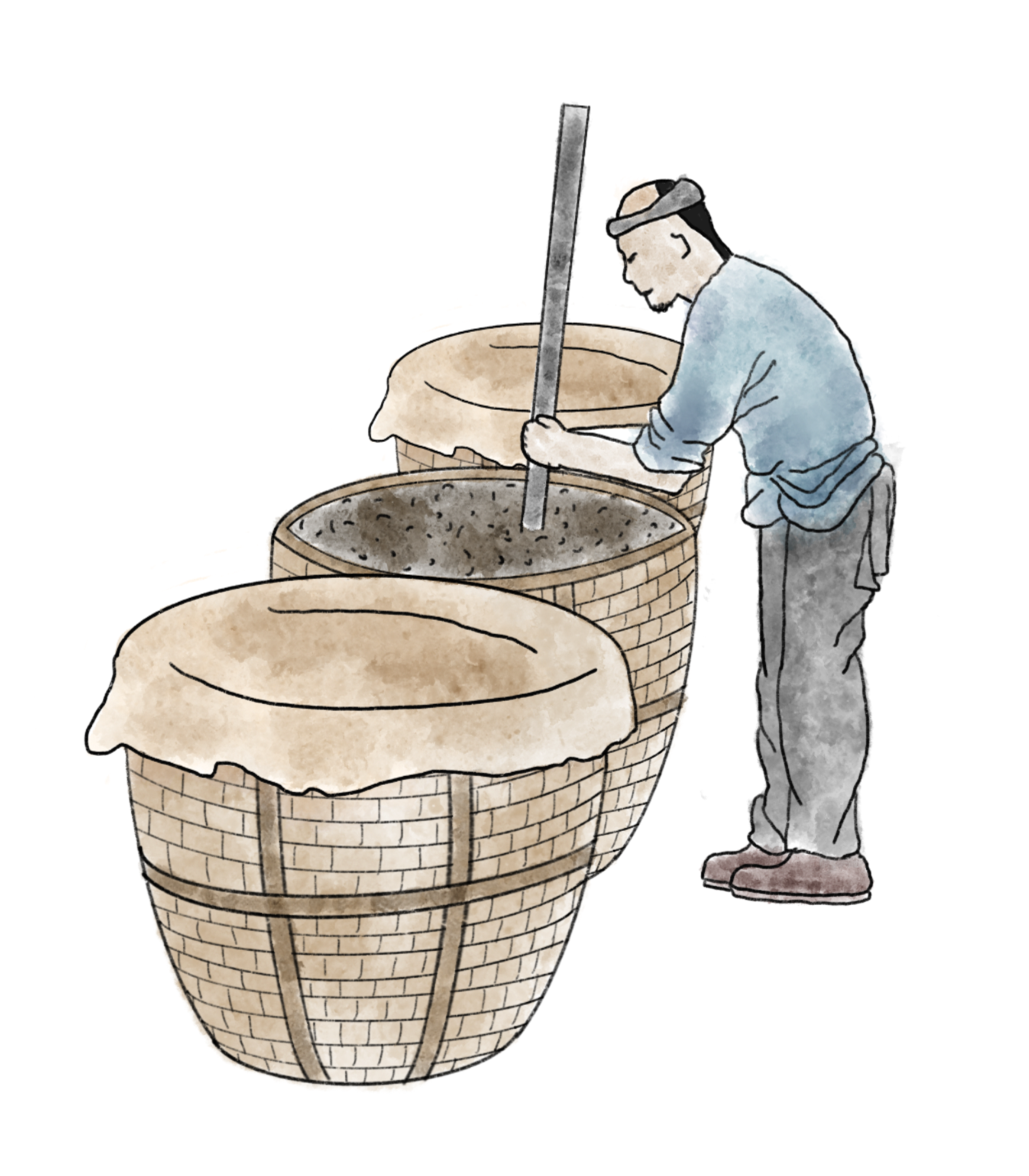
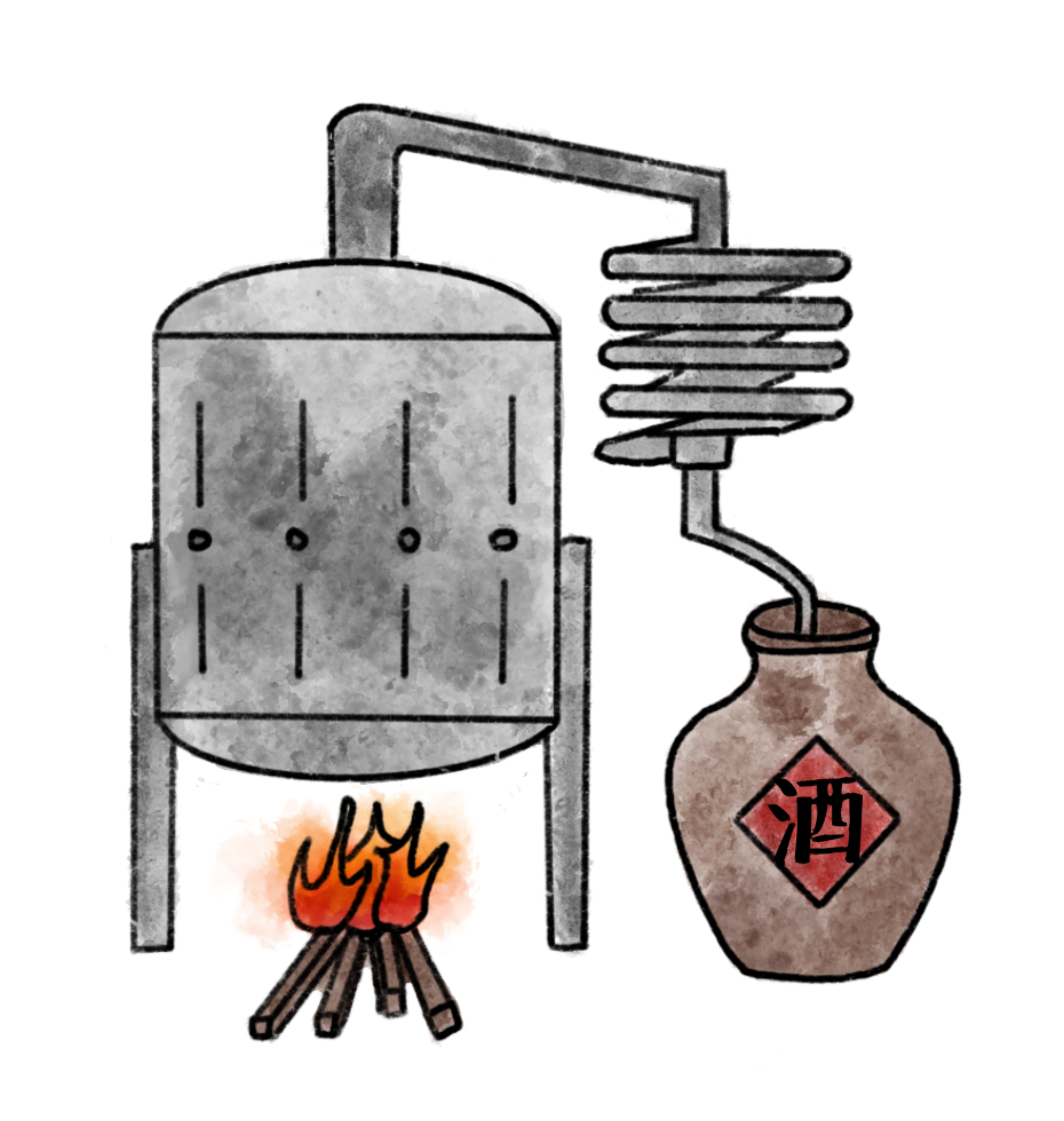
IV. Distillation
The alcohol content produced by fermentation is actually quite low. To increase the alcohol content (degree), distillation is generally required for purification. The primary vessel used is the steaming basket (except for the semi-solid method). Slow distillation is implemented, and measures such as pouring yellow water and tail liquor into the pot for distillation can also be adopted. After the distillation process, the raw liquor obtained usually has a higher degree. Different batches of raw liquor have different qualities and styles and need to be stored separately.
V. Aging
Aging is also called maturation. When we say “Baijiu gets better with age,” we are referring to Baijiu that has gone through the aging process. The high-proof raw liquor distilled can only be considered as a semi-finished product. It is spicy and not smooth. Only by storing it in a specific environment for a certain period of time to allow it to naturally age can the Baijiu become soft, mellow, and richly flavored. It is best to store the Baijiu in a ceramic jar. Larger storage containers can be made of stainless steel and other materials, but aluminum containers should be avoided as much as possible. The wine should be aged naturally, and it is forbidden to use catalysts and other chemical methods to hasten aging
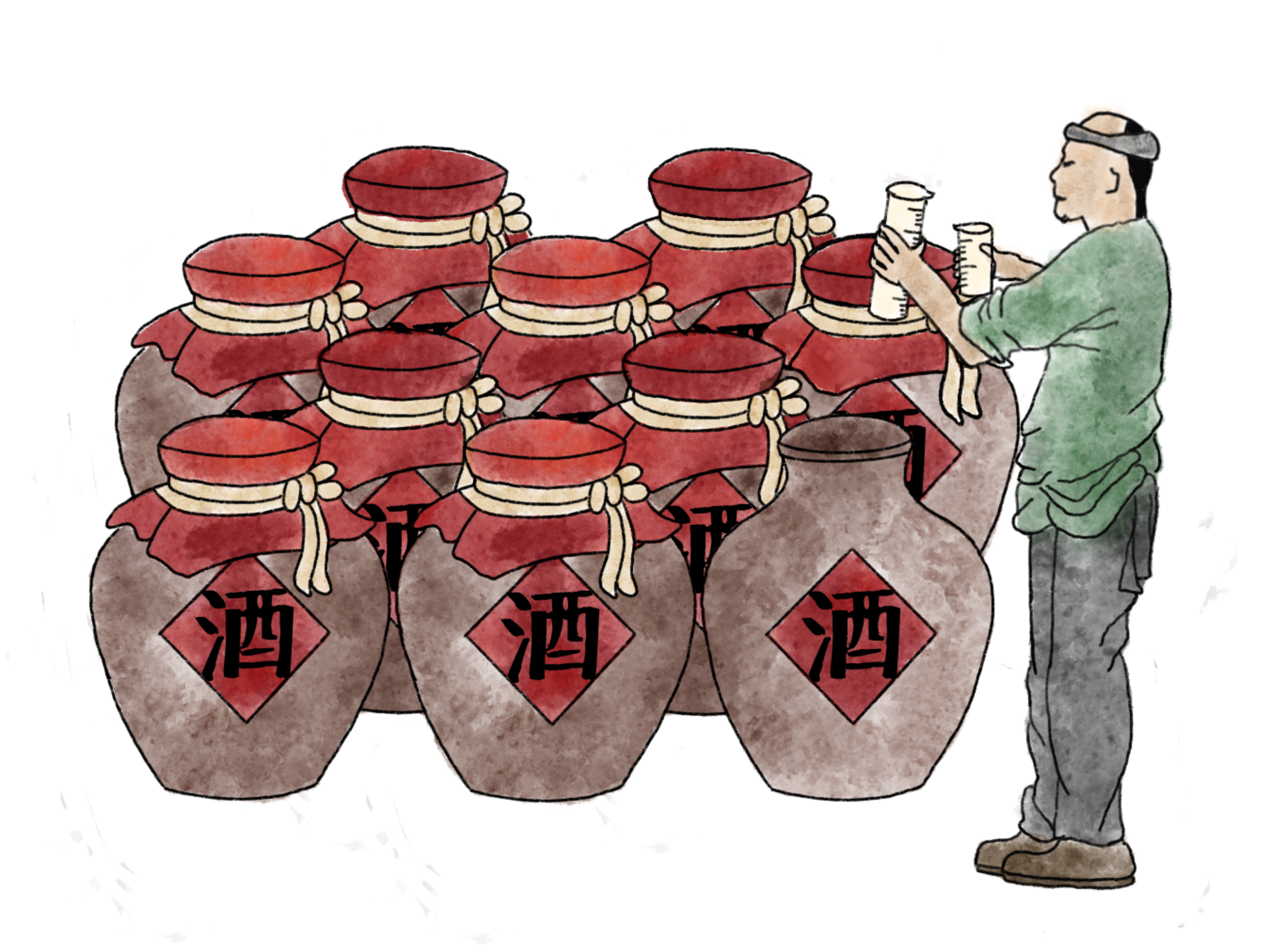
VI. Blending
Blending, although some people in the industry mistakenly call this process “adjusting” to avoid consumer confusion, it’s important to clarify that the blending discussed here is completely different from the typical understanding of “three spirits and one water” blending. In this context, blending refers to the permissible mix of different rounds and grades of liquor and various flavored spirits. Absolutely no addition of mixed esters or non-Baijiu fermented aromatic substances is allowed.
It has already been explained that the raw liquor (also known as base liquor) is distilled from the distiller (commonly known as the steam pot), with an alcohol content generally between 70 and 85 degrees. Due to different production batches and distillation batches, the flavor and style of this raw or base liquor are not uniform, making it unfit for direct consumption. To standardize the taste, remove impurities, harmonize the aroma, lower the alcohol content, and make it suitable for consumers to drink, the only approach is “blending”, which Baijiu manufacturers also refer to as adjustment.
VII. Bottling
After the finished liquor has been blended and passed inspection, it can then be bottled and labeled. Then, it’s ready to enter the market and meet consumers.

